Inspired
A Rural Women’s Centre in Zimbabwe Has Become a Regional Emblem & Change Maker in the Fight Against Period Poverty
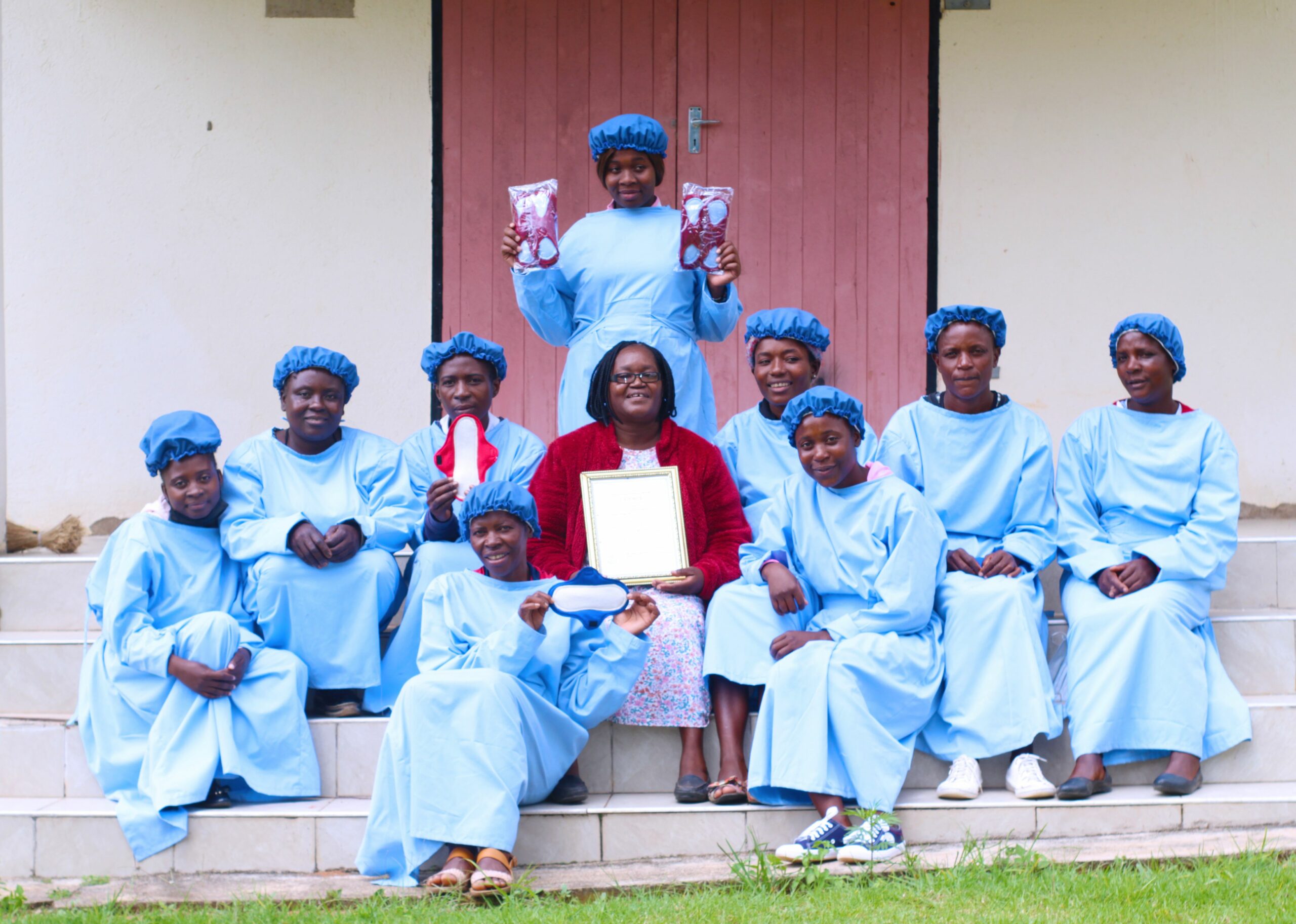
It is a cold, drizzly morning and inside a spacious factory, where the humming, whirring, and clanking of machinery are hard on the ear and the strong scent of disinfectant from the morning’s cleaning is hard on the nose, scores of women in blue protective working clothes are seated at sewing machines, industriously sewing menstrual cloth pads.
This is Bonda Women’s Center, a working site for rural women in Mutasa, Manicaland Province, in Zimbabwe and Gladys Mukaratirwa is pacing the floor, attending to each workstation and explaining the different phases in the production process to the women at the machines—from pattern tracing, cutting, sewing and neatening, to packaging.
Mukaratirwa, a witty, charismatic, and innovative woman from Mazimauya village, Mutasa, is the Director of the Chiedza Community Welfare Trust, the enterprise that owns the factory. She is also the brains behind the success of the women’s centre.
A former teacher and multiple degrees holder in consumer sciences and nutrition, the 60-year-old has dedicated her life to developing skills that empower the girls and women in her village and ensure they can earn an income.
In the late 1990s, the Bonda Women’s Center was a tiny building, built by 65 women brought together by Mukaratirwa. Recognizing that most women struggled to put food on the table despite having husbands working in town, she wanted to explore entrepreneurial ways for women to make a living.
At that time, the women made bread, selling it at shopping hubs for rural communities known locally as “growth points.” All too often, the women would come back to the centre penniless after giving the bread to their hungry children.
So the centre decided to employ the design skills that most of the women had learned from childhood when creating designs for their traditional huts, to craft batiks (wax-printed textiles) and sell them. The women would travel as far as Harare and Victoria Falls and set up kiosks to sell their batiks at tourist markets.
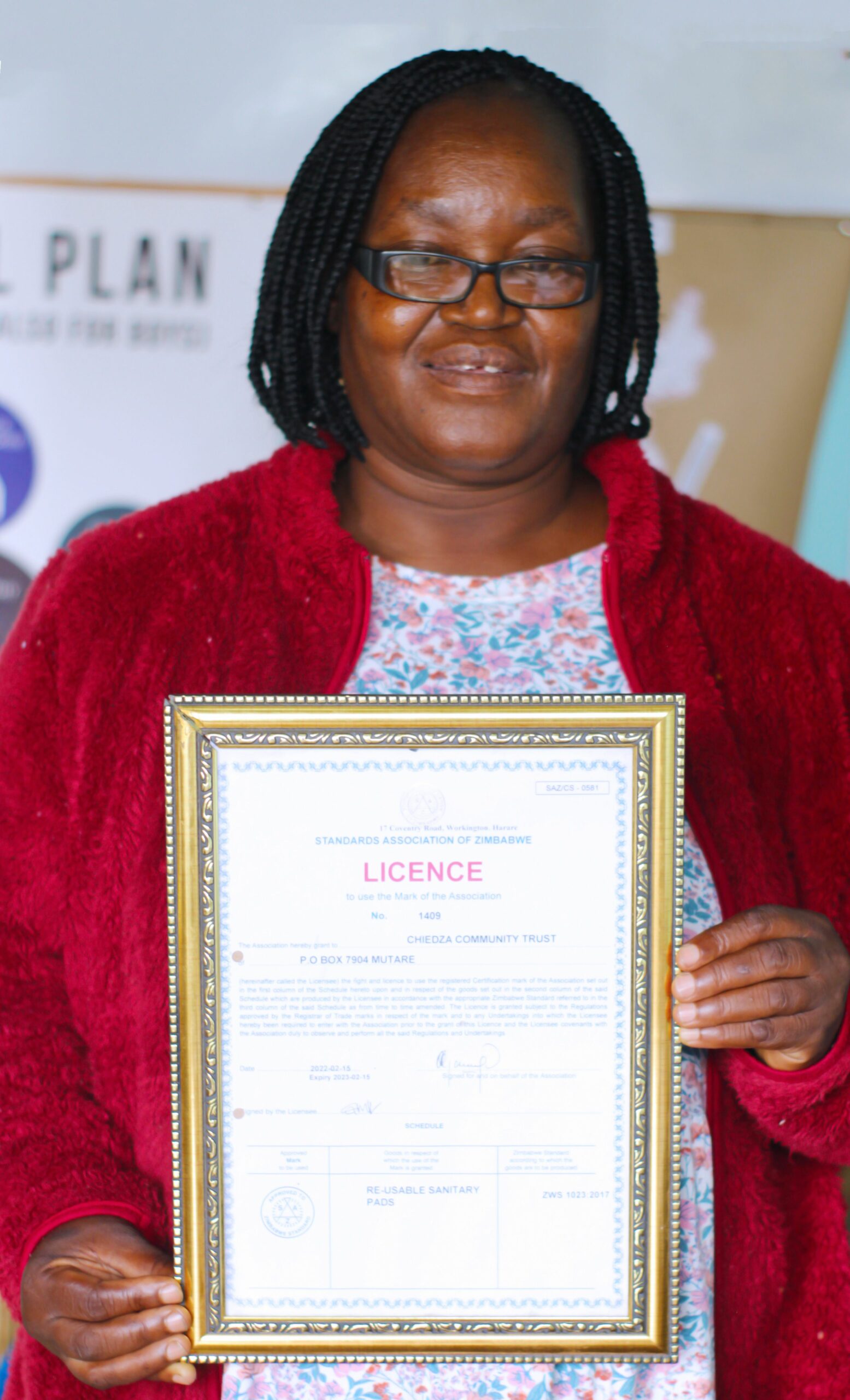
As demand grew, the team qualified to be partially funded with building materials by the Zimbabwe European Union Micro Projects, an economic recovery partnership between Zimbabwe and the European Union, under its rural infrastructure development pillar.
The women then built their first factory, hoping to scale up their batik production. They managed to complete the small factory and increase sales, but political and economic crises then began to reduce the number of visiting tourists, impacting their sales.
Despite the ups and downs, Mukaratirwa had a bigger vision for this group and kept urging the women on.
“I would tell the women not to lose hope and that we would one day have a very big factory,” Mukaratirwa said. “Pointing through the Women’s Center window,” she added. “They would laugh it off in disbelief, back when we were still in that tiny building down there.”
The vision of a bigger factory meant a lot of individual sacrifices, which some women were not prepared to make. “We talked about putting some of our earnings from sales into building a bigger factory, but many of the women wanted their earnings in full. This did not stop us from starting the construction of the bigger factory.“
In the end, thirty-five women invested in building the bigger factory. But only a few of them lived to see its completion and subsequent production.
“It’s very sad that out of the thirty-five women who were sacrificed, only six were left,” Mukaratirwa said.
“Around 2000, HIV came; it was a new health phenomenon we were unaware of. We just witnessed most of the husbands working in the capital returning home very sick. The husbands started to die, one after the other, and before we knew it, our women also started getting sick and started dying, one after the other, again, “she recalled.
According to a 2002 Global HIV/AIDS Epidemic report by the joint United Nations Programme on AIDS (UNAIDS) in 2001, that period saw an estimated 33.7% of adult HIV/AIDS prevalence in Zimbabwe. The prevalence was higher in women.
In response, the women in Gladys’s group supported each other and grew a keen interest in sexual and reproductive health as they desperately fought against losing more women to HIV.
“After losing our women, we were committed to feeding, sheltering, and sending the orphans they left behind to school. That is also how this centre became an orphanage,” Glady stated.
While providing education for the orphans, the idea of manufacturing cloth sanitary towels was born.
In 2012, Mukaratirwa noticed that the girls the organisation was sending to school were no longer performing well. Some were missing classes and even quitting school.
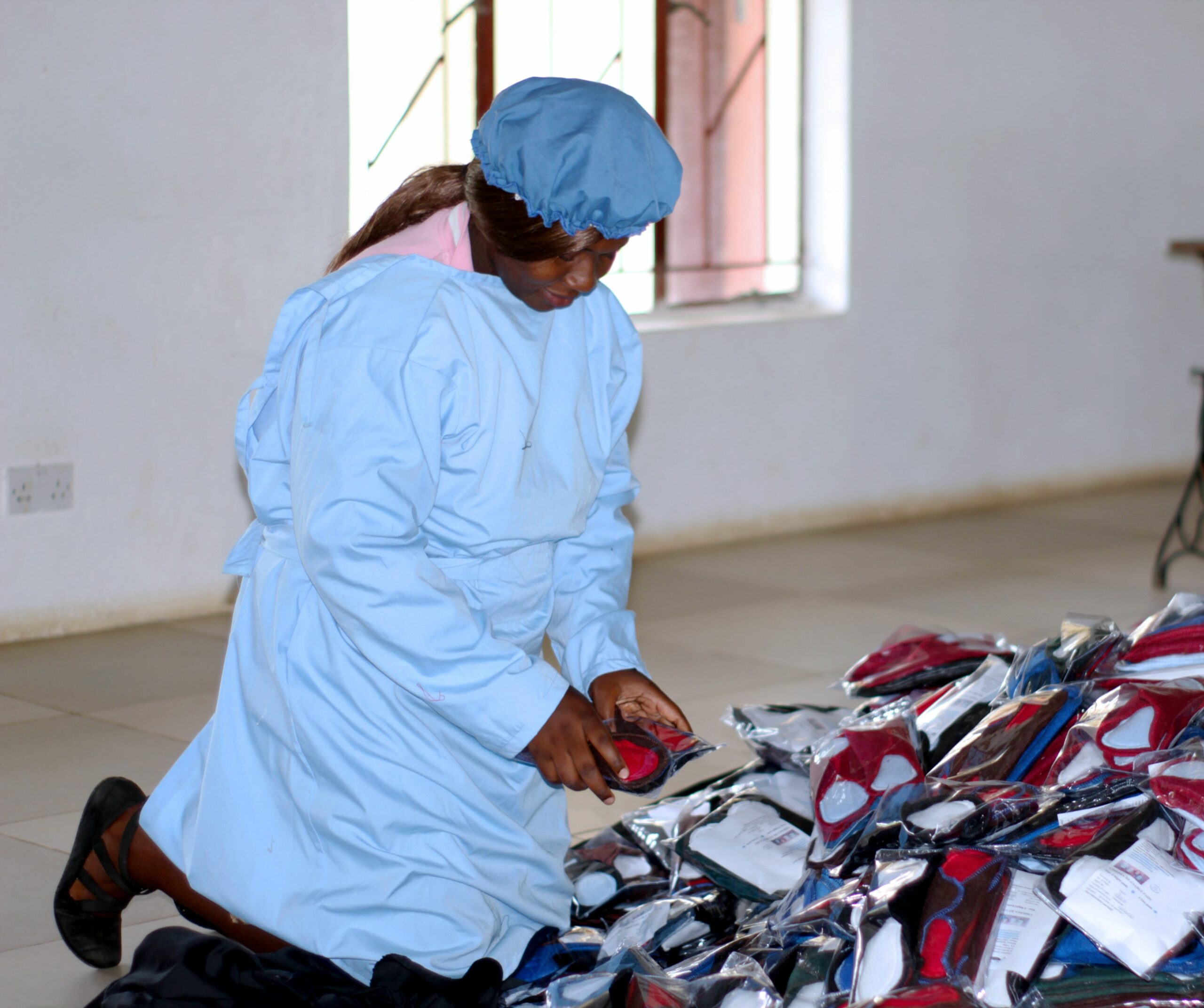
She sat the girls down, and they revealed they struggled to balance school and menstruation due to a lack of sanitary pads. There was also a high incidence of shaming in school, especially when one of the girls stained her uniform.
Their experience with this stigma was affirmed by a 2014 SNV (Stichting Nederlandse Vrijwilligers) Girls in Control study, highlighting that 54% of girls experienced mocking during menstruation, while 72% had never used disposable sanitary pads.
In addition, in local culture, menstruation has been-and in some instances remains-taboo, with most girls reaching the age of menstruation not taught how to manage it.
The women at the Bonda factory tried to address this issue by buying disposable pads for the girls. But with over one hundred girls to cater to, buying these pads was not sustainable. What they needed were cheaper and long-lasting sanitary pads.
“It struck my mind that older women in the villages were using clothes and washing them for reuse,” Mukaratirwa recalled.
“So I suggested to the women that we make cloth pads for the girls. Using the textile knowledge l gained from my Family and Consumer Sciences degree to weigh options of suitable fabrics, I told the women we needed a highly absorbent fabric that was soft to the skin and had a safe fibre morphology without substances like zinc and carcinogenic. The material also had to be non-smelly when exposed to blood and easy to wash. That is how we chose fleece material.“
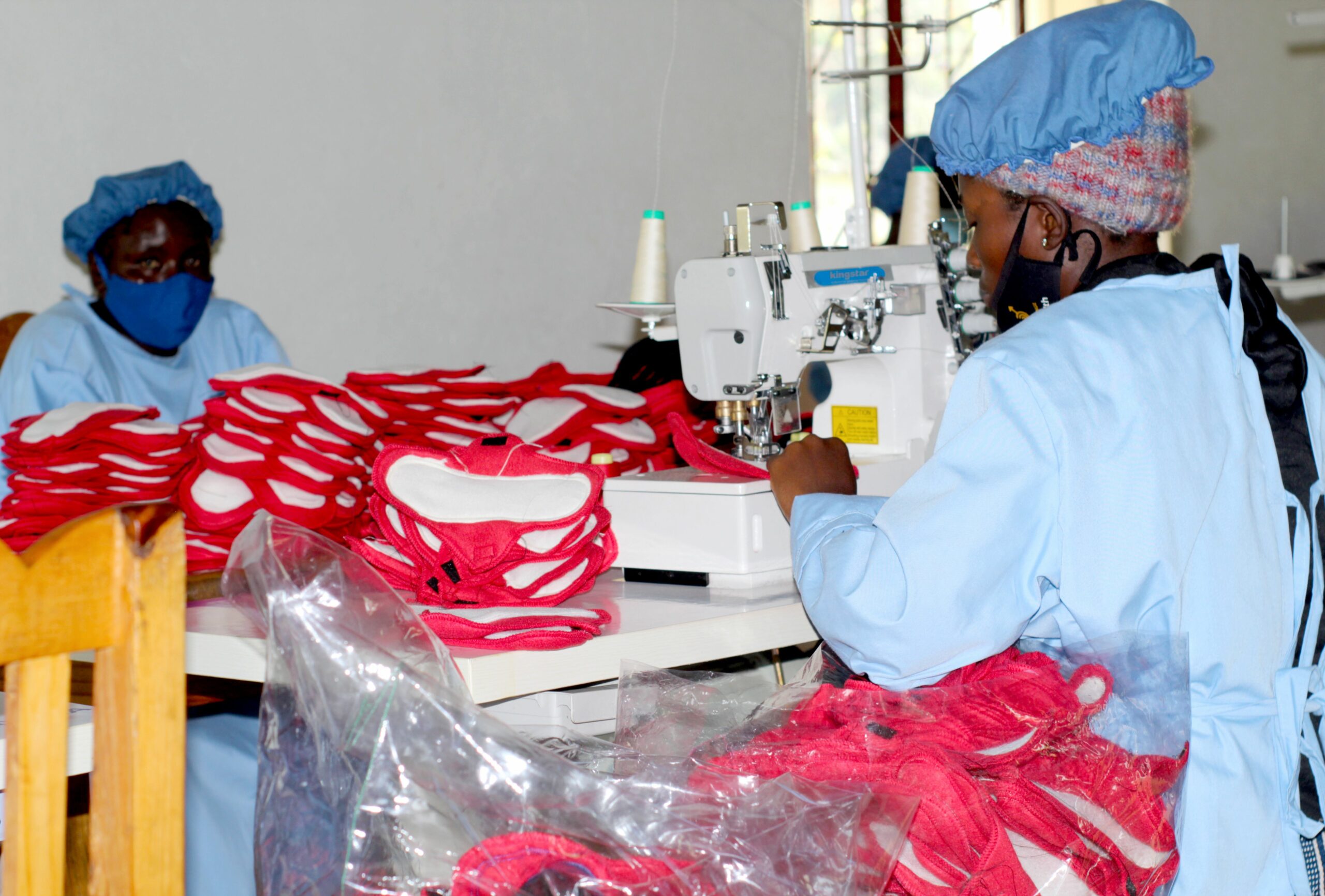
The women started making cloth pads for the orphans, and as a result, the girls’ participation in school improved. The women also started raising awareness about menstruation in schools and community gatherings to discourage period shaming and highlight the impacts of period poverty on girls and the community.
Soon, the women realised that their young girls were just a fraction of the many who faced period poverty. At that moment, the journey towards building a reputable social enterprise that designs and manufactures cheap and reusable sanitary pads began.
The Chiedza Community Welfare Trust (CCWT) was born soon after.
In 2013, Mukaratirwa registered CCWT as a private voluntary organisation that manufactures reusable pads. The women then got ready to do a lot of research to come up with the Chiedza pad, a product that would be approved for sale by local regulatory boards.
When Mukaratirwa approached the Standard Association of Zimbabwe (SAZ), she discovered there were no standards governing local manufacturers and quality control of sanitary materials in Zimbabwe.
Indeed, according to a 2020 Unicef report on The Zimbabwe Formative Research on Menstrual Hygiene Management, the Medicines Control Authority of Zimbabwe, which is responsible for monitoring medicines, medical equipment, and other related materials, did not have a sanitary wear standard or a system to monitor the quality of sanitary wear on the market.
But Mukaratirwa and the women did not want to put out a product that served a purpose but was not safe to use. Losing their colleagues to HIV had taught them to value health and safety.
The group then elected to work closely with SAZ to develop a standard for reusable cloth pads in Zimbabwe. They did this by offering to have quality and health tests done on the Chiedza pad.
The girls and women in the group were thus all involved in improving the quality of the pad and the production process.
“We asked the girls how they found the initial pads we made,” Mukaratirwa explained.
“And they complained of leakages, so we improved by adding a waterproof surgical layer. We wanted the product to be used by all women, so we used the pads among ourselves, and that is how we came up with our four sizes: teen, regular, super, and maternity,” she added.
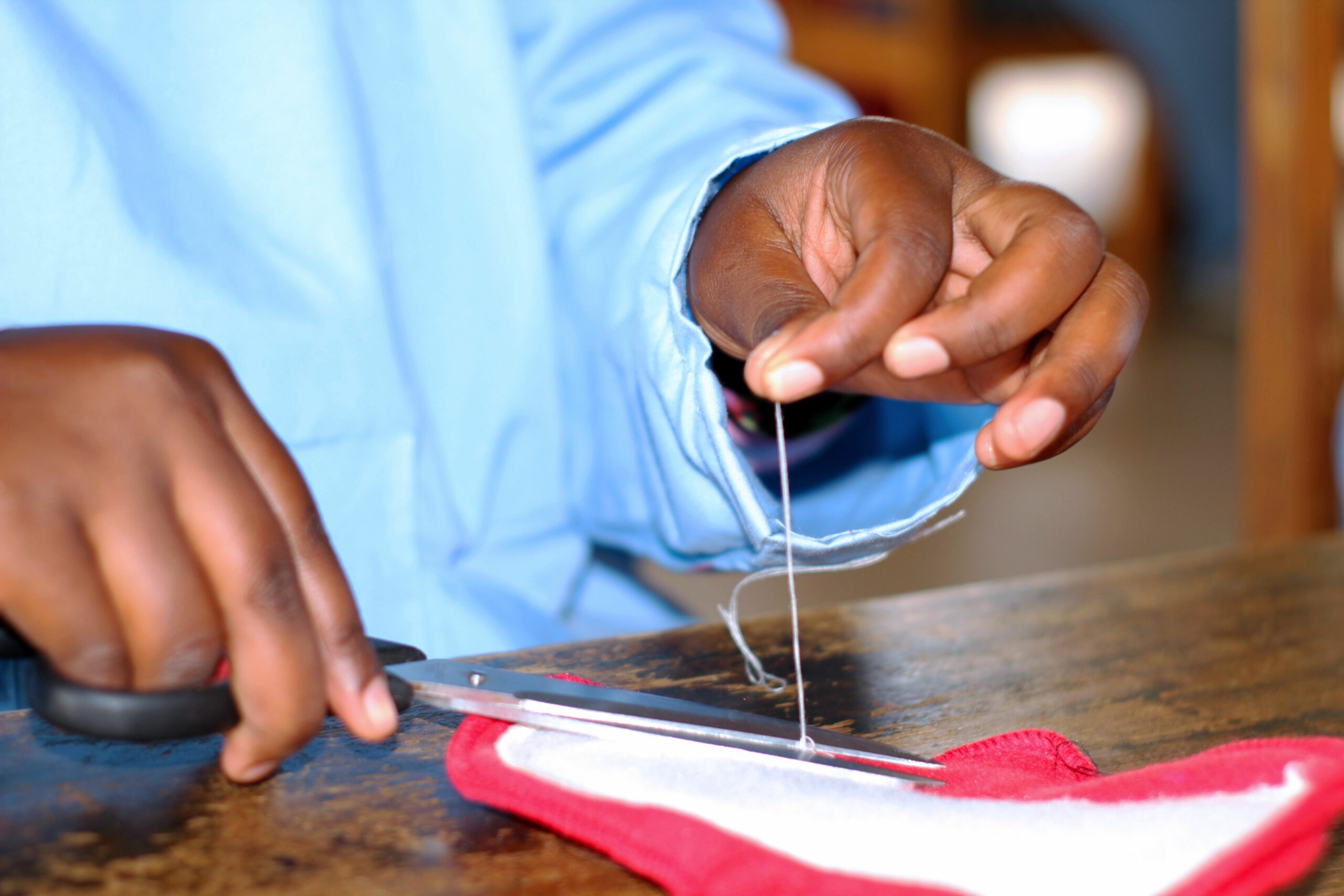
“You can see these sizes cut across the age of the user, the type of flow the user has, whether light or heavy and the purpose the cloth pad is being used for. For example, a woman who has just given birth manages well with maternity size. We also added a white layer which goes straight to the skin, and the white layer does not stain because its fibre morphology repels the protein that is in the blood,” Mukaratirwa further explained.
The pads were also tested in a lab to see if the material was still safe for health after being made, washed many times, and used for a long time.
“We would take the pads to the lab before they were used to test for zinc and any carcinogenic they may have picked up during manufacturing,” Mukaratirwa continued.
“After passing this phase, I would ask the women to use and wash the pads so we could take the pad back to the lab to make sure the material had not formed microbes from use, washing, and drying in the sun. When we passed that stage, we would use the pads over and over again and return them to the labs. That is how we came up with the lifespan of the pads, which is 30 washes.“
By 2017, they had a product that conformed to the requirements, and so they upscaled the production of Chiedza pads pending the legal announcement of a standard.
Today, CCWT is one of a handful of local sanitary pad manufacturers that are licenced by the Standards Association of Zimbabwe.
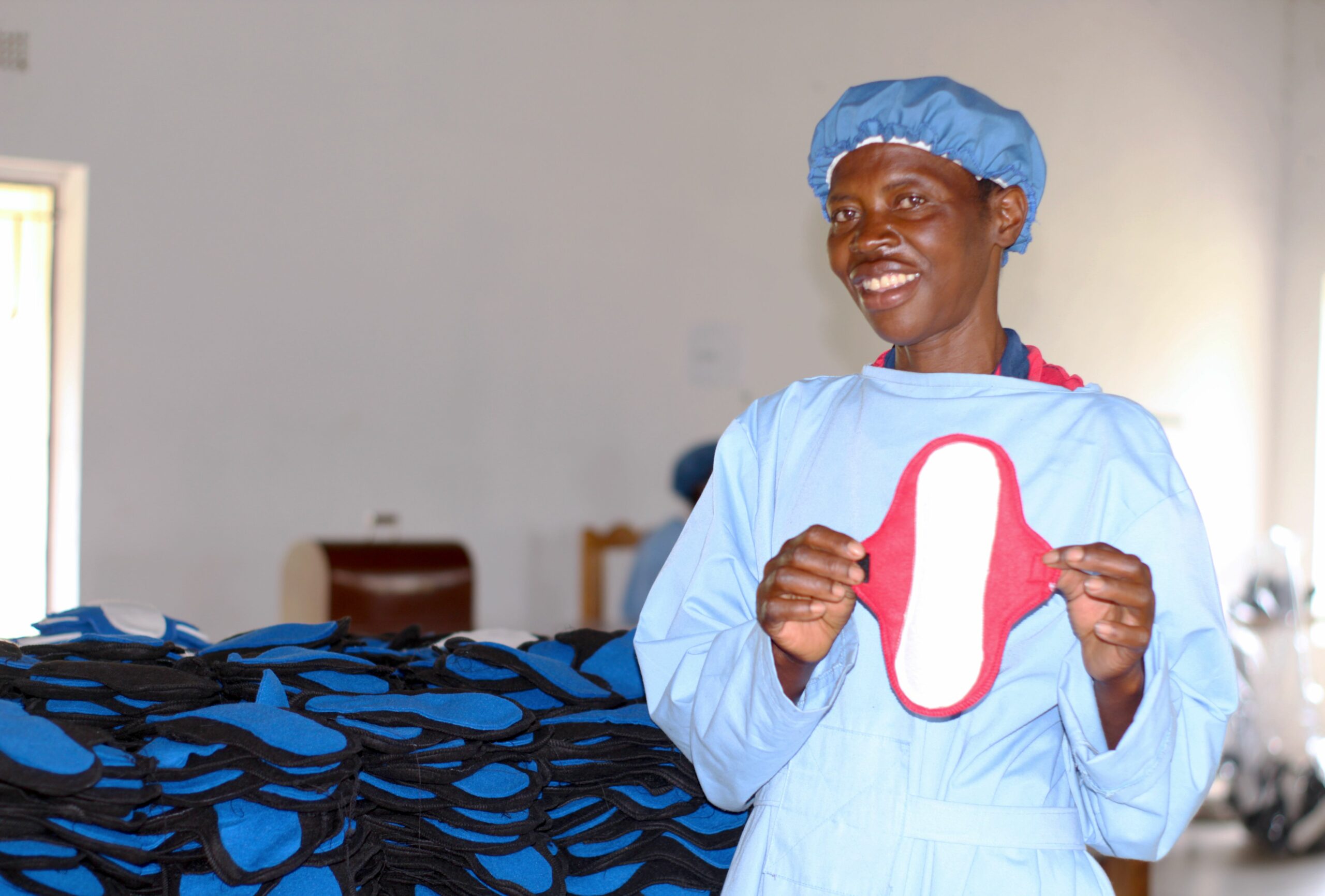
The high quality of Chiedza pads has given the company a huge market. Non-governmental organisations that work on menstrual management often buy pads from the factory.
The production capacity per month is 50, 000 pads and sometimes more. Each pack is sold for the equivalent of 3.8 US dollars and contains two night and three-day pads that can be used for up to 18 months. Each pad can be worn for up to six hours.
In comparison, the cost of managing menstruation for 18 months in Zimbabwe using disposable pads is between 18 and 72 US dollars, depending on the brand purchased.
CCWT has brought financial leverage for the women working in the factory, and relief to women and girls in menstrual distress-and in this way is fighting menstrual poverty by producing a cheaper, long-lasting cloth pad that helps fight period poverty and all the challenges associated with it.
22-year-old Lee Chisuko is currently on a work-related learning attachment at the factory, supported by Chiedza, as a requirement of her Bachelor of Science honours degree in Social Work. Not only has she picked up the technical aspects of pad production, but she has also learned important personal lessons.
“I have learned to be assertive by working with the women in pad production as they have educated me in life skills,” she said.
Women who work in the factory have also been able to save money because they get paid regularly.
“I managed to buy a cow and do a lot of things with the money I got from working at Chiedza,” said Catherine Pomo, who has been working at the factory for six years.
Margret Nyakani (62), one of the original group of women who started the centre with Mukaratirwa, is currently receiving a pension from the factory.
“I retired from the factory in 2018 and have been receiving my pension since. I wish all the women we started with could have lived to see how our dream of creating a legacy that served us and our community has come true. We sacrificed a lot, sometimes going for two years without a salary. Yet here I am retired and still earning from the factory, “Nyakani said.
The impact of the factory in the Mutasa district is felt across the province. Chiedza pads have been donated to female inmates at Mutare Remand Prison, as well as to victims of Cyclone Idai, which struck communities in the Chimanimani district in 2019.
Despite the success of the Chiedza pads, the organisation still has a long way to go in terms of making the cloth pad a choice for many, reveals CCWT Programs Officer, Clayton Mandimutsira.
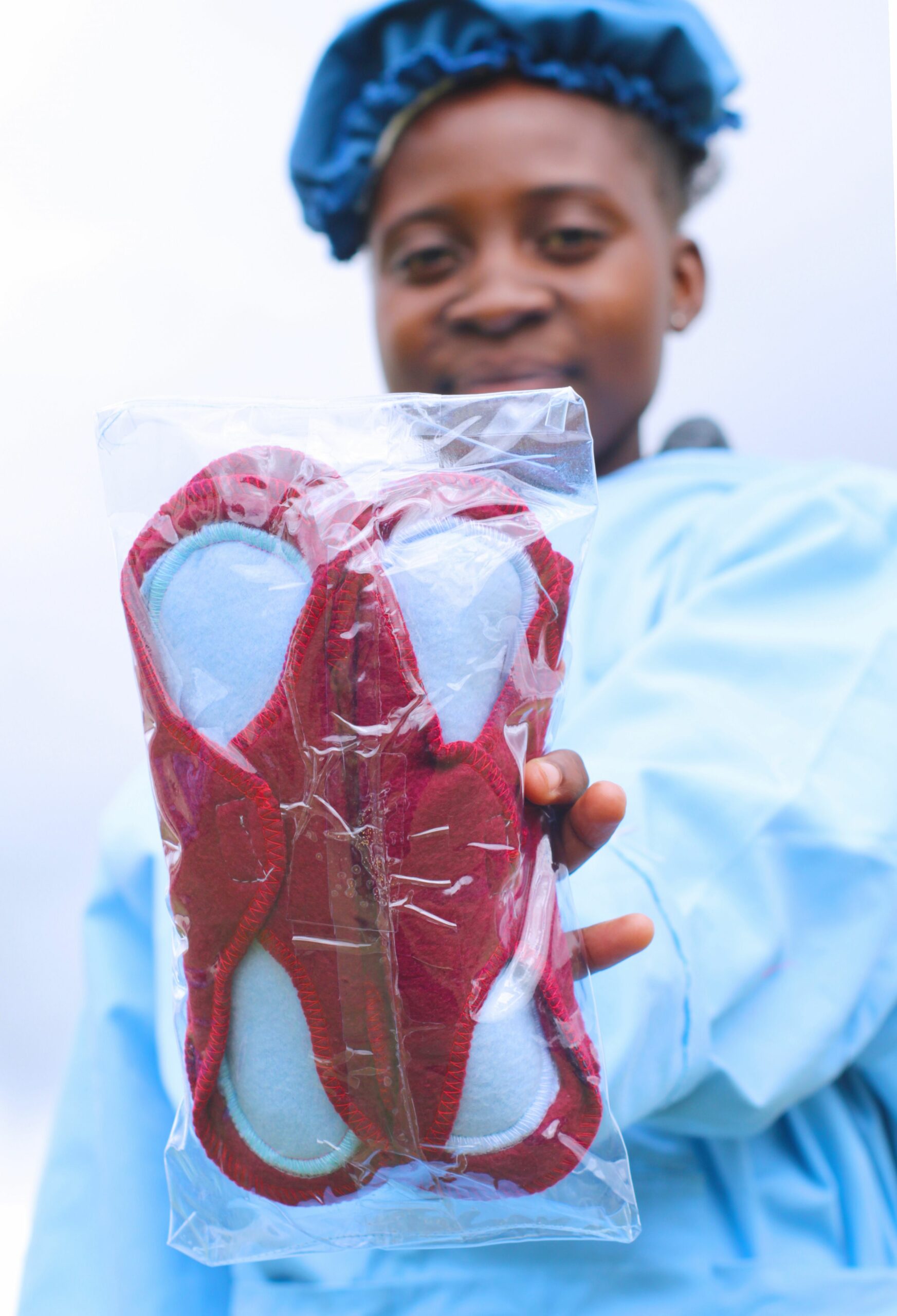
“I wouldn’t say we are there yet. We are still very low in terms of production and acceptability. “We need to create more menstrual health awareness among girls and women so that they know this reusable pad is safe, as it has gone through lab tests and it lasts longer,” Mandimutsira said.
Frank Mphahlo, Director of Green Governance of Zimbabwe Trust (GGZT), an organisation working in Zimbabwe to promote sustainable environmental management through advancing citizen inclusion, highlighted the fact that reusable sanitary pads not only offer safe menstruation but translate to a safer and cleaner environment in areas where the waste management is a challenge.
“Sanitary pads and other disposable items such as diapers and plastics pose a danger to the environment and increase the burden on the waste disposal system. Non-disposable sanitary pads have a triple effect of reducing the amount of harmful disposable waste on the environment, offering a sustainable solution to menstrual health and addressing the complications associated with sanitary health for girls,” Mphahlo said.
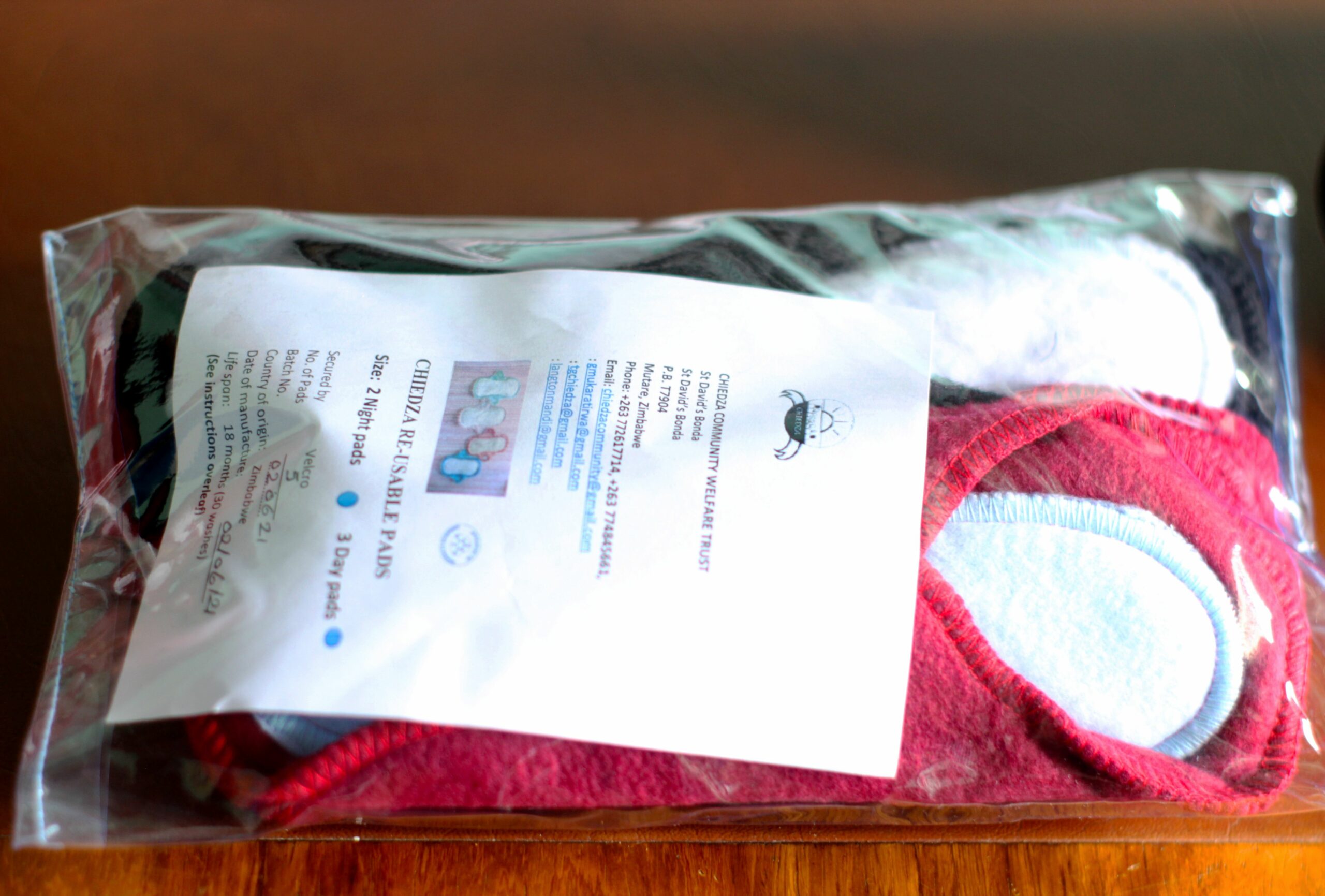
For her part, Mukaratirwa looks back on the journey of CCWT with pride.
“For me, the biggest profit from the enterprise is how it saves lives and empowers girls. If you want to build a strong woman, it begins by empowering her menstrual health. Only then can she have the confidence to rise,” she concluded.
Photo/Story Credit: Jacqueline Muchazoreka
[This story was provided to bird by Storify, an agency under Africa No Filter]






















